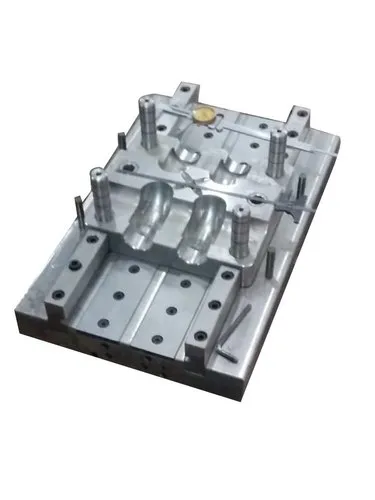Gas-assisted injection molding (GAIM) is an advanced plastic molding process that improves the manufacturing of large, complex, and hollow plastic parts. In this technique, an inert gas (usually nitrogen) is injected into the molten plastic within the mold. The gas pushes the molten plastic against the mold walls, creating a hollow channel inside the part.
This process reduces material usage, enhances surface quality, and helps maintain dimensional accuracy, especially in parts with thick cross-sections.
How It Works
Plastic Injection: A conventional shot of molten plastic is partially injected into the mold.
Gas Injection: Inert gas is introduced behind the plastic through a specially designed nozzle or gas pin.
Core Formation: The gas displaces the molten core, pushing the plastic to the mold’s extremities.
Cooling and Ejection: The part is cooled and ejected, typically with a hollow internal structure.
Benefits of Gas-Assisted Injection Molding
Material Savings
Reduces the amount of plastic required by creating hollow sections within the part.
Especially beneficial for large parts where material cost is significant.
Improved Part Strength and Structural Integrity
The process prevents sink marks and internal stress by allowing more even material distribution.
Hollow channels can enhance stiffness without extra weight.
Reduced Warpage and Shrinkage
Since the gas pressure maintains consistent packing during cooling, parts are less likely to warp.
Superior Surface Finish
Smooth and aesthetically pleasing surfaces are achieved, as the plastic remains pressed firmly against the mold walls during gas injection.
Shorter Cycle Times
Less plastic to cool means faster cycle times, improving manufacturing efficiency.
Design Flexibility
Enables production of intricate parts with complex geometries and varying wall thicknesses.
Common Applications
Automotive Components
Door handles, instrument panels, seat frames, and fluid reservoirs.
Consumer Products
Furniture parts, handles, and enclosures for electronics or appliances.
Industrial Equipment
Housings and frames for heavy machinery, power tools, and equipment panels.
Medical Devices
Casings for diagnostic tools, carts, and non-critical structural components.
Sports and Recreation
Bicycle frames, exercise equipment parts, and outdoor gear components.
Conclusion
Gas-assisted injection molding is a game-changing technique for manufacturers aiming to reduce costs, improve product quality, and expand design possibilities. It’s particularly advantageous in applications demanding lightweight, durable, and aesthetically superior parts.


